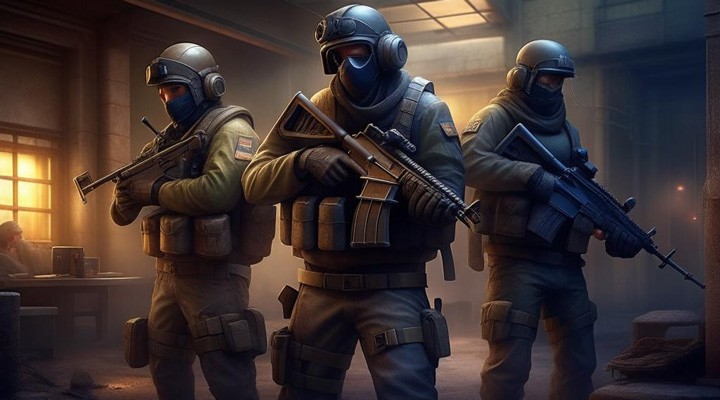CS 2 Lucky Pro Settings: What Top Players Are Using in 2023
In 2023, “CS 2 Lucky” has undoubtedly made waves in the gaming community, setting itself apart with its dynamic gameplay mechanics and immersive user experience. As with any intricate software, getting the most out of the game requires a fine-tuned approach to its settings. Whether you’re aiming for visual perfection, seeking that audio sweet spot, or striving for a competitive edge with optimized controls, the right configurations can make all the difference.
Delving into the resolution and display modes, ensuring audio clarity, and making the most of your network connection are just the tip of the iceberg. As seasoned players and newcomers alike dive into the heart of the action, understanding the optimal settings is paramount. Here, we’ll unravel the best practices, hidden gems, and tried-and-true methods to elevate your CS 2 Lucky experience this year.
Importance of optimizing settings for an enhanced gaming or user experience
Optimizing settings for any game or software is paramount in unlocking the full potential of the experience it offers. In the realm of gaming, fine-tuned settings can be the difference between seamless, immersive gameplay and a lag-ridden, visually lackluster experience. By personalizing settings to match the capabilities of one’s hardware and personal preferences, gamers can achieve fluid motion, crystal-clear graphics, and pinpoint-accurate audio cues, all of which significantly enhance immersion and competitive prowess.
Beyond aesthetics and performance, optimized settings can also streamline controls and interface interactions, reducing unnecessary friction and allowing the user to engage with the game more intuitively. In essence, taking the time to meticulously adjust and test various configurations ensures that the software or game runs at its optimum, providing an experience that’s both enjoyable and seamless.
A brief overview of the default settings in CS 2 Lucky
CS 2 Lucky, fresh out of the box, comes with a set of default settings intended to provide a balanced experience for a broad spectrum of users and systems. These settings are designed to ensure that the game runs smoothly on a wide range of hardware configurations, from entry-level setups to more advanced gaming rigs. At a glance, the default visual settings offer a medium graphics quality, ensuring stable performance without overly taxing the system. Audio settings are typically balanced to give players a clear distinction between ambient sounds and crucial gameplay cues.
Control schemes are mapped to universally accepted standards, allowing newcomers to jump in without much hassle. While network settings default to auto-select, aiming to connect players to the nearest and most optimal server. It’s worth noting that while these defaults provide a stable starting point, they might not always harness the full capabilities of specific systems or cater to individual player preferences.
Visual and Graphics Settings
1. Resolution and Display Mode at CS 2 Lucky
- Resolution: This is the number of pixels displayed on your screen. A higher resolution, like 1920×1080 or 4K, offers clearer and more detailed graphics but demands more from your system. It’s essential to choose a resolution that matches your monitor’s native capability for the best visual clarity.
- Display Mode: Games typically offer three modes: Full-screen, Windowed, and Borderless Windowed. Full-screen mode dedicates all system resources to the game, often resulting in better performance. Windowed mode allows for multitasking but can be less immersive. Borderless Windowed combines the best of both, offering a full-screen experience without the typical full-screen mode restrictions.
2. Texture and Detail Settings
- Texture Quality: This determines the clarity and quality of surfaces within the game. High-quality textures can make the game world look stunning but can be taxing on systems with limited VRAM.
- Detail Level: This setting affects the intricacy of objects and environments. A high detail level showcases every blade of grass and every wrinkle on a character’s face, while a low detail may simplify or eliminate these finer points. Adjusting this can have a significant impact on CS 2 Lucky game performance.

3. Brightness and Color
- Brightness: Adjusting this ensures that the game isn’t too dark or too bright. Proper brightness settings can help players spot enemies or key items more easily. It’s usually best to calibrate brightness in a dimly lit room.
- Color: Some games offer color settings or filters that can enhance or change the game’s overall look. This could be a simple saturation slider, making colors more vibrant, or specific colorblind modes to help those with visual impairments. Adjusting color settings can not only improve visuals but also make gameplay more accessible for everyone.
Sound Settings in CS 2 Lucky
1. Volume Mix
- Game Sound: This pertains to the in-game sounds such as ambient noises, footsteps, gunshots, and other gameplay-related audio. Adjusting this ensures you can hear vital audio cues without them being drowned out by other sounds.
- Music: Many games feature background music or scores that accompany gameplay. While some players prefer to have this at full volume for an immersive experience, others might lower it to hear gameplay sounds more clearly.
- Voice Chat: If the game has a multiplayer component with voice communication, this slider will adjust the volume of other players’ voices. It’s crucial to balance this so you can clearly hear teammates without missing in-game sound cues.
- System Sounds: These are sounds that your computer or console makes outside of the CS 2 Lucky game, like notifications. Depending on your preference, you might want to lower these to avoid distractions during gameplay.
2. Spatial Sound and Surround Sound
- Spatial Sound: This is an advanced sound setting that simulates 3D audio. It helps players pinpoint the exact location of sounds in the game world, such as determining the direction from which an enemy is approaching. When enabled, it creates an immersive sound environment, making players feel like they’re truly “inside” the game.
- Surround Sound: Traditionally meant for setups with multiple speakers (like 5.1 or 7.1 systems), this setting ensures audio is outputted to all speakers, creating a cocoon of sound around the player. It’s especially useful for players who want a cinematic and immersive audio experience. Headphones with surround sound capabilities can also benefit from this setting, offering a more directional sound experience.
Gameplay and Control Settings
Mouse Sensitivity and DPI
- Mouse Sensitivity: This determines how fast or slow your in-game CS 2 Lucky cursor or crosshair moves in response to your mouse movements. A higher sensitivity allows for quicker movements but may sacrifice accuracy, while a lower sensitivity offers precision at the cost of speed.
- DPI (Dots Per Inch): This is a measure of the mouse’s hardware sensitivity. A higher DPI means the cursor will move faster across the screen for the same physical movement of the mouse. Many gaming mice come with adjustable DPI settings, allowing players to fine-tune their preferred balance between speed and accuracy.
Key Bindings
- Default Key Bindings: Most games come with a set of default controls for various actions. These are designed to be intuitive and accessible for the majority of CS 2 Lucky players.
- Custom Key Bindings: However, every player is different, and what feels comfortable for one person might not for another. Custom key bindings allow players to assign game actions to keys (or buttons) that feel the most natural and efficient for them, potentially improving their reaction time and gameplay experience.
CS 2 Lucky Game Mechanics Settings
- Look/Invert Controls: Some players prefer to have their view controls inverted, especially those who come from flight simulation backgrounds. This setting allows players to choose which way their in-game character looks when they move their mouse or controller stick up or down.
- Aim Assist: Typically found in shooting games, especially on consoles, this setting helps players aim by slightly adjusting the crosshair towards enemies. Some players prefer to turn it off for a more challenging experience or to train their aiming skills.
- Field of View (FOV): This determines how much of the game world is visible on the screen. A wider FOV allows players to see more to their sides, which can be advantageous in competitive settings, but might also cause distortion or performance issues on some systems.
Network and Connectivity
Ping and Latency
- Ping: This is a measure of the time it takes for a packet of data to travel from your computer to a server and back. Expressed in milliseconds (ms), a lower ping indicates a faster connection, which is essential for real-time online gaming. High ping can result in noticeable delays between player actions and game responses, often referred to as lag.
- Latency: While often used interchangeably with ping, latency is a broader term that encompasses all potential delays in data transmission, including server processing time and other factors. Like with ping, lower latency values are preferable, ensuring smoother gameplay.
Server Selection with CS 2 Lucky
- Automatic Server Selection: Many online games come with a feature that automatically connects players to the “best” server based on their location and the current server load. This aims to provide the lowest possible ping and latency for the player.
- Manual Server Selection: Some players, especially those in competitive scenes or those playing with friends from different regions, might prefer to choose their server manually. This could be to ensure they’re playing on a specific region’s server, or to join less populated servers for private matches. While manual selection offers more control, it’s crucial to keep an eye on the ping to the chosen server, as selecting a distant server might result in higher latency.
Conclusion
Optimizing game settings is not a one-size-fits-all endeavor; it’s an ongoing process of tweaking and testing to find the perfect balance that complements both the player’s style and their system’s capabilities. As selection of games receive updates, and as hardware evolves, it’s imperative to revisit settings to ensure they remain optimized for the current environment. Moreover, what works brilliantly for one player might not necessarily be the best configuration for another. Personal comfort, combined with system performance, often dictates the best settings.
To every gamer out there, remember that the defaults are merely a starting point. Dive deep into the settings, experiment, and don’t be afraid to make changes. It’s through this iterative process that you’ll uncover a configuration that feels tailor-made for you. Let your individuality shine in the way you set up your game, and always prioritize an experience that feels right for you. After all, gaming is a personal journey, and ensuring your settings align with your preferences can significantly elevate your enjoyment and success in the digital realm.
